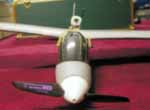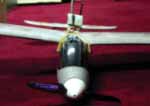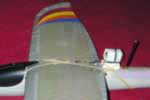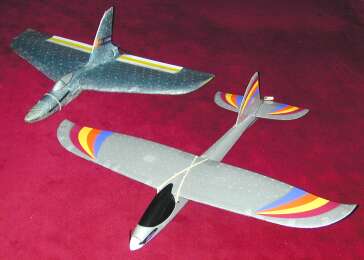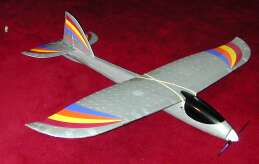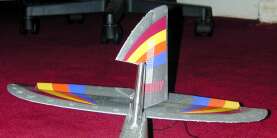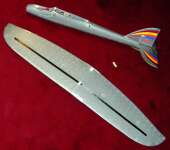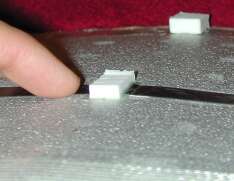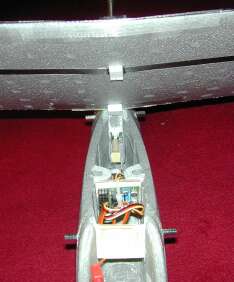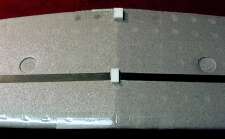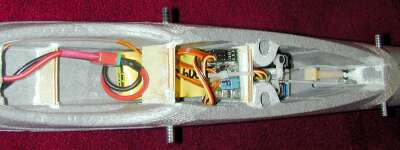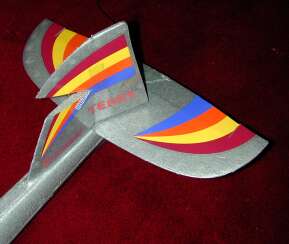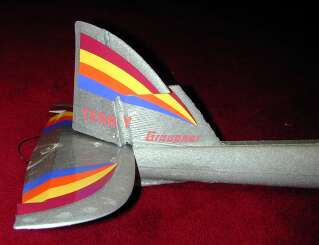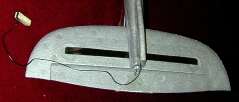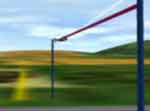|
Modifications:
- All mold-vent nubblies flattened with 600-grit sandpaper. (I've got enough Lego, thanks!)
- Counterbalanced rudder. Slot cut at right angles to the (angled) hinge.
Shorter hinge reinforced with strapping tape (stock decal insufficient).
- Reinforcements:
- half-inch CF tape along bottom of wing and horizontal stab, flush into recessed slots.
- 1 mm CF rod on entire leading edge, covered in packing tape, prevents dings.
- 3/4 oz fiberglass cloth sparingly covers keel, tail skid, wingtips, and control-horn insertion
points.
- Packing tape covers keel and tips of wing and stab.
- Antenna wire recessed into razor-sawed slot in keel (protected by the fiberglass),
goes to side of tail skid.
Trailing one-foot length.
- Elastics and index-points instead of wing bolts. Elastics attach to CF tubes (sexier
than dowels, and they moan oddly when you glide overhead): front one epoxied to bulkhead, rear one through solid foam.
Index points are small squares of dense foam, one at trailing edge, one between the
erstwhile wing-bolt mounts. Fiberglass protects leading and trailing edge where
elastics pass over; strapping tape protects fuselage from dings near CF tubes.
(Might use those ultra-strong magnets for version 2.0!)
- CF tube instead of spruce fuselage stiffener.
(The weight savings got absorbed by
other reinforcements.)
- White "PC-11" slow-cure epoxy used inside: more flexible than 5-minute, and smeared
for slight strengthening of interior foam. Also used for wing CF tape and other
similarly large areas.
- HS-55 servo, short arm, for elevator;
beefy HS-81MG, long arm with tiny hole (less slop), for rudder.
- Control-rod sleeves supported with a dowel wedged into the CF-rod stiffener:
reduces slop!
- Bulkheads made of double-thickness ply, sandwiching a layer of CF tape.
- Both bulkheads are half-height, and wing-bolt mounts carved out below,
so battery can slide back all the way to the servos. CG is perfect.
- Battery stop is forward far enough for access; space forward of (and above) battery is
occupied by light foam in flight, to absorb energy from unintended sudden deceleration.
Experimentally verified on day one :-).
- KR600AE 6- and 7-cell packs have plenty of thrust. RRC1000 NiMH 8-cell has reasonable thrust and
ridiculous duration. Update: after the added weight of a half dozen nose jobs, it needs
7x or 8x nicad, or 8x NiMH. 6x nicad is only safe in zero wind.
With the huge thrust of 8x nicad, mix throttle to rudder to compensate for propwash.
|
